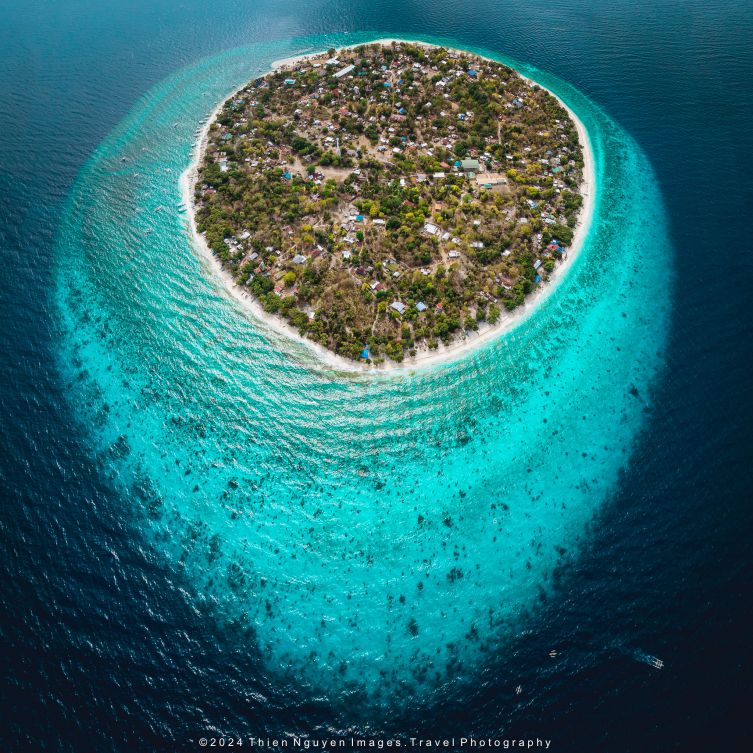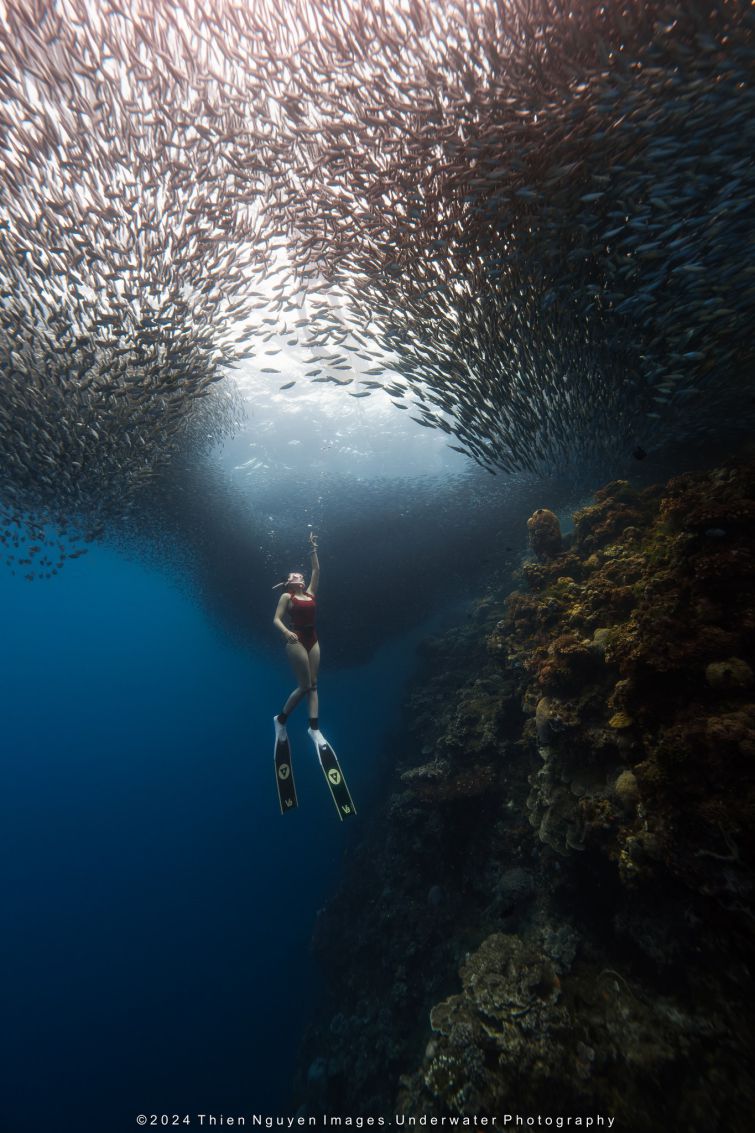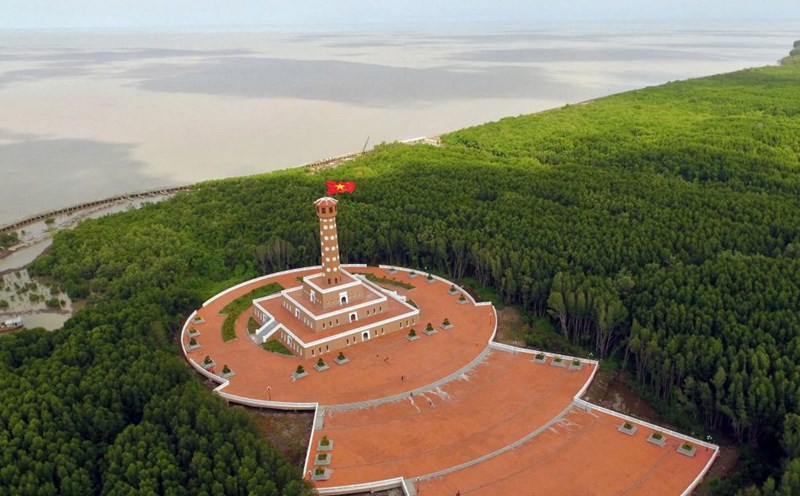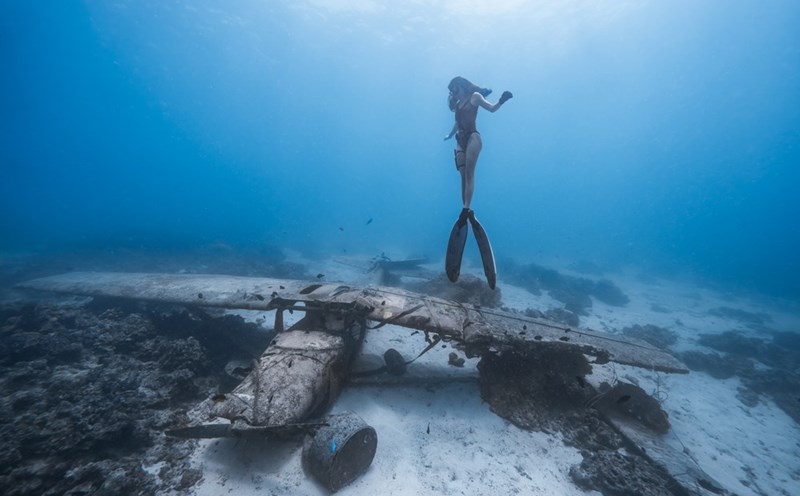The Blue Pearl in the Ocean
Panglao is an island in the northern Bohol Sea, in the Central Visayas region of the Visayas island group (Philippines). The island has an area of 91.12 km2, formed from Maribojoc limestone and is recognized by UNESCO as a World Heritage Site for its terrain and diverse marine life.
Located off the southwest coast of Panglao, Balicasag Island is circular in shape with a diameter of only about 600m. The island is surrounded by clear blue waters, home to a myriad of marine life.
Balicasag has been recognized as a marine sanctuary since 1985. It is also famous as one of the top diving spots in the Philippines, attracting thousands of people each year to dive and see sea turtles and colorful schools of fish on the ocean floor.
During his journey to explore the vast seas, photographer Nguyen Ngoc Thien (born in 1988, Ho Chi Minh City) had the opportunity to visit Bohol, Panglao and Balicasag Island in early May. The wonderful moments captured here helped him win the Special Photo Series Award of the Heritage Photography Awards - Heritage Journey 2024.

“Diving is the most popular activity in Balicasag. The marine reserve is famous for its extensive coral reefs, creating vibrant underwater forests and high biodiversity,” the photographer shared.
Panglao in general and Balicasag Sanctuary in particular are places that anyone who loves diving and exploring nature should visit at least once in their life. The diversity and richness of the marine ecosystem, together with the wild and peaceful beauty of the sanctuaries, have created an unforgettable experience.
For photographers, Panglao is not just a tourist destination, but also a journey to explore and enjoy the beauty of nature, where every moment becomes memorable and meaningful.
Diving journey to "hunt" for photos of giant sardines
To get to Balicasag Island, from Vietnam, visitors can take a direct flight to Manila (Philippines) which takes about 4 hours. Here, continue to book a domestic flight to Bohol-Panglao International Airport (TAG) on Panglao Island (about 1.5 hours). From the beach near the town center, it only takes about 45 minutes by boat to reach Balicasag Island.
The coral ecosystem in Balicasag is home to many species of tropical fish, from small schools of fish hiding under the coral reef such as sardines, big-eyed traveller fish... to larger fish such as stingrays, dolphins, sharks, sea turtles... One of the main goals of photographer Thien Nguyen this time is to "hunt" for photos of giant schools of sardines on the ocean floor.
Before arriving here, he had booked a local diving guide to ensure the best and safest diving experience. In addition, the guide also had the task of checking the weather conditions, the location of the appearance and concentration of sardines around the area.

The photographer commented that diving to capture the giant sardines in Panglao was truly an impressive and memorable experience. He recalled: “The schools of fish are constantly moving, forming mesmerizing shapes that change with every movement of the water and light. When you pass through the giant sardines ‘clouds’ under the water, and feel their myriad transformations, it is definitely a very interesting experience and brings a strong connection with nature.”
He also had the opportunity to encounter sea creatures at Turtle Point, experience swimming with turtles, and feel their gentleness and serenity as they glide through the ocean.
To protect the marine ecosystem here, many local and international organizations have cooperated and implemented conservation initiatives such as establishing Marine Protected Areas (MPAs), to monitor and prevent illegal fishing activities and control plastic waste.
Photographer Thien Nguyen said: “Local diving guides are all conscious of protecting and preserving the marine ecosystem. They are factors that contribute significantly to conveying information, regulations as well as spreading the spirit of protecting the marine ecosystem to tourists when participating in diving tours.”
In addition, tourism services here prioritize environmental and ecological issues, with the criterion that protecting the sea is also protecting the livelihoods of the indigenous community.
In addition to Balicasag, the photographer revealed that Panglao also has many other interesting diving spots such as: Napaling reef, plane wreck diving spot, or whale sharks... for tourists to freely explore. This place is also considered a "resort paradise" with luxury resorts, hotels, and unique local cuisine.
A 7-day trip to Panglao and Balicasag can cost tourists around 20 - 30 million VND, depending on the time of purchasing air tickets and the accommodation service they choose. The photographer also noted some points when visiting and diving in Panglao: “To respect the marine environment here, visitors are not allowed to touch corals or marine creatures, do not collect shells, starfish, corals or any marine creatures as souvenirs. Keep your distance from marine creatures to avoid disturbing their habitat. Use environmentally friendly sunscreen, do not litter, respect local culture, and support sustainable tourism activities,” the photographer shared.











